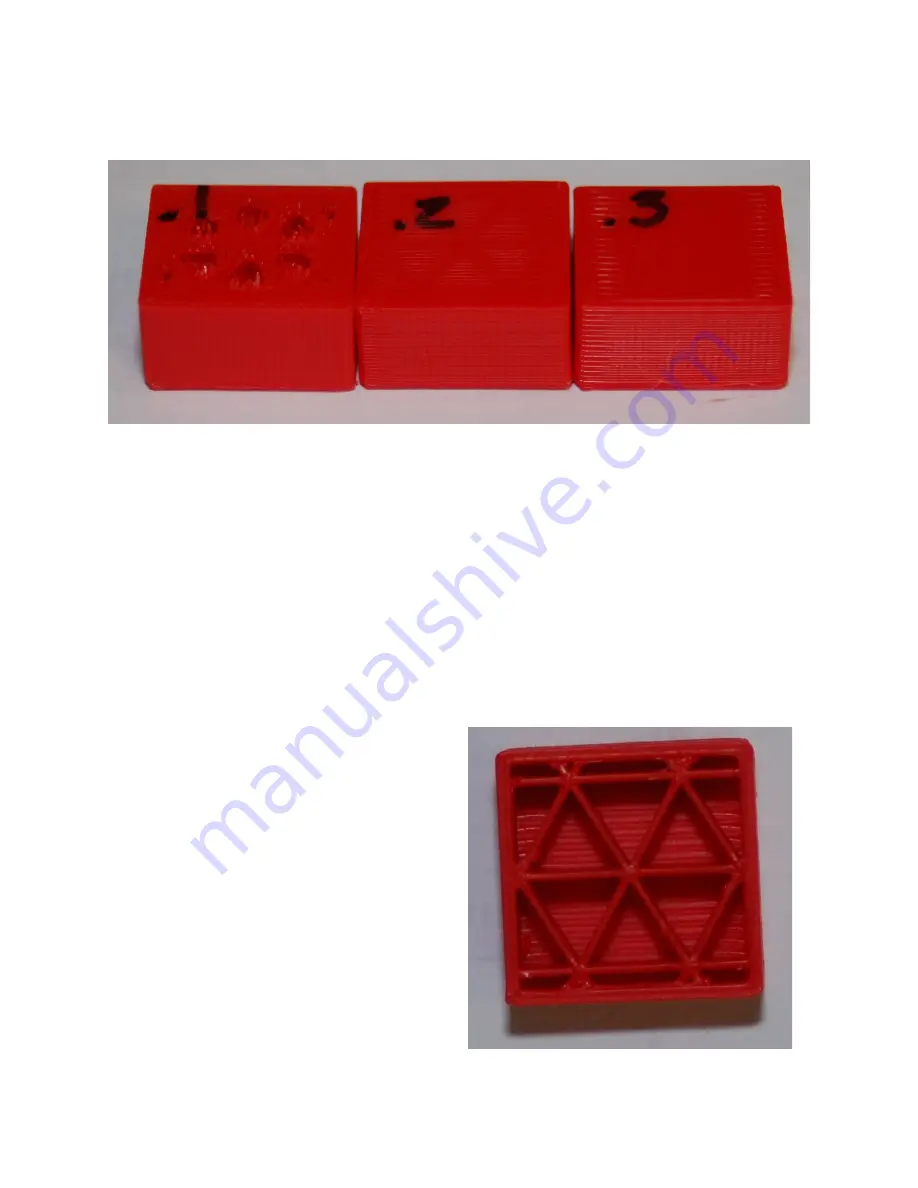
Here's what the
Coarse
,
Standard
, and
Fine
layer heights look like when printing the
little test cube.
Starting from left to right, the layer heights are 0.1mm, 0.2mm and 0.3mm. You'll notice
that the top layer on the 0.1mm print is kind of ratty and torn up. This is because the number of
top layers is set to 3. This is perfectly ok with thicker layer heights, but it should have been set
to at least 5 for the 0.1mm layer height that the
Fine
setting uses. You'll learn how to tweak that
in a little bit.
You can see how the smoothness of the sides decrease as the layer thickness
increases. If you want to print something really quick, you could go up to a 0.35mm layer
height. I wouldn't recommend anything over 0.40mm if you're using a 0.5mm nozzle however.
Fill Density
– This parameter controls how solid your printed part is. The number is a
percentage, from 0 (totally hollow) to 1 (totally solid). The default fill density (also known as
“infill”) is 0.2 or 20%. The image below shows what that looks like inside our little test cube.
You can tweak the infill to get a more
robust or a lighter part. For most prints, 20% is a
good infill value.
The
Fill Density
option also allows you to
choose one of three preset values.
Light
sets
the infill to 10%,
Standard
to 30%, and
Heavy
to
90%.
Later on I'll show you how to change to a
different infill pattern. The one shown on the
right is the Triangle pattern.
17
















































